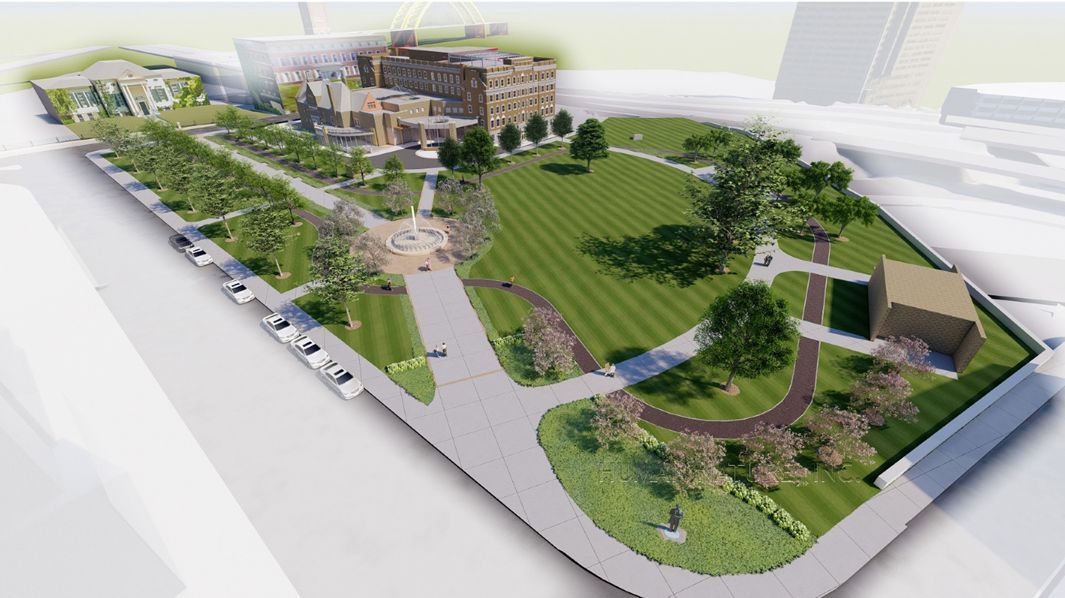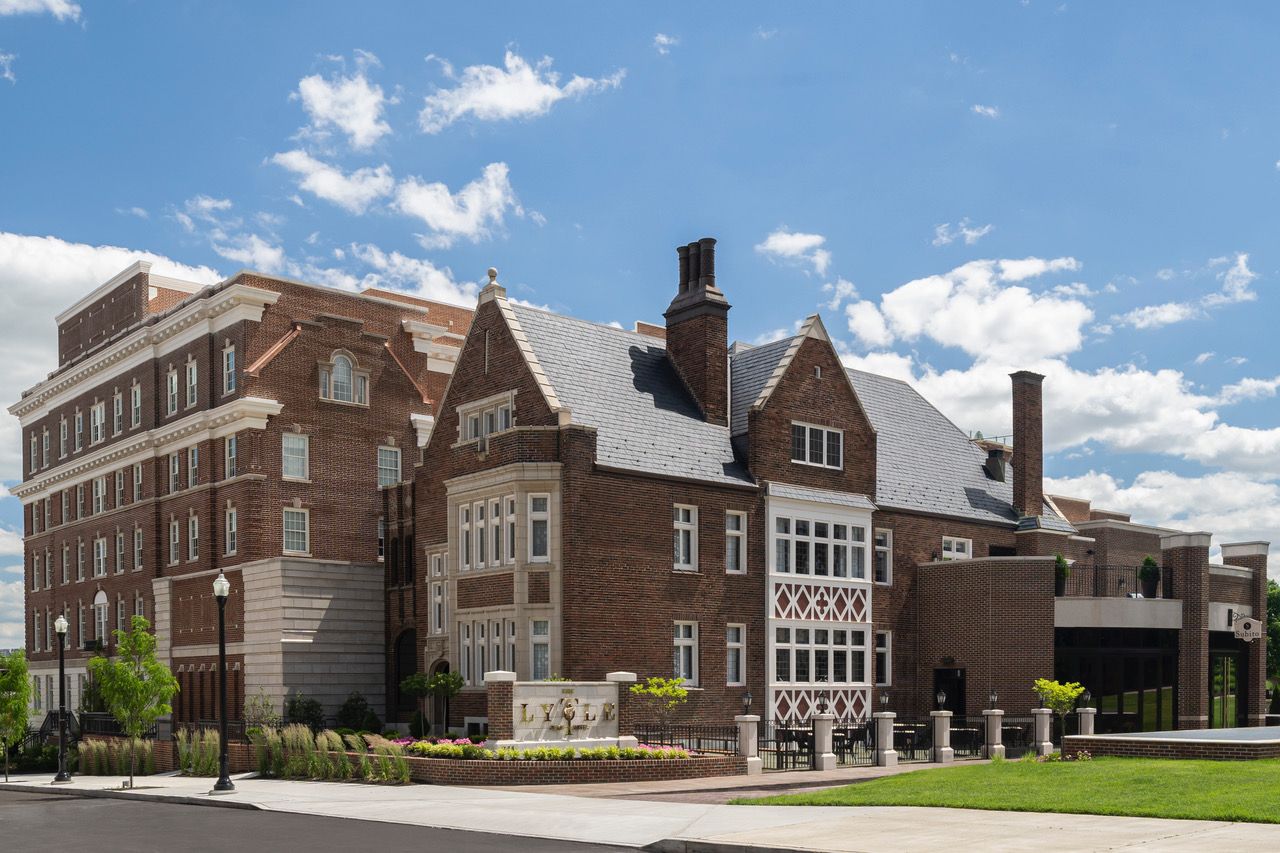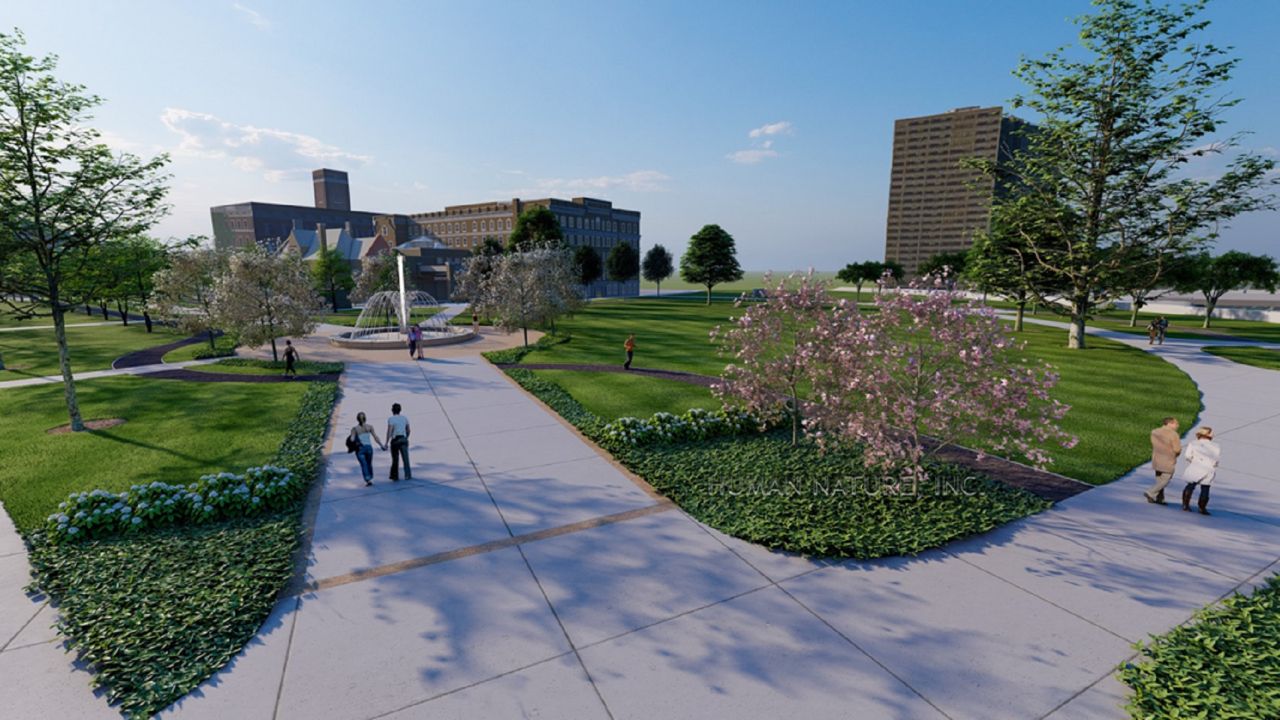CINCINNATI — After nearly three years of planning, the nearly $5 million renovation of historic Lytle Park is set to begin next week. It’s the continuation of several major investments in the historic part of downtown Cincinnati it calls homes.
What You Need To Know
- The $4.7 million renovation of Lytle Park begins next week
- The project is adding several plazas, a decorative fountain, a running track and a bocce ball court
- The 2.3-acre green space is in the heart of the Lytle Park Historic District
- Lytle Park Historic District has seen a great deal of investment over the past two years
Lytle Park is one of Cincinnati’s oldest parks, dating back to 1905. It’s in the heart of the Lytle Park Historic District, a small area in the south-easternmost part of the city's Central Business District.
The 2.3-acre park is known for its seasonal flower beds and an 11-foot bronze statue featuring a rare depiction of a beardless Abraham Lincoln.
Restoration of the green space became necessary in 2017 as the result of an Ohio Department of Transportation (ODOT) project in Lytle Tunnel, which carries Interstate 71 traffic under Fthe park, connecting Fort Washington Way to the Northeast Expressway.
Jason Barron, director of Cincinnati Parks, said the tunnel ventilation project left Lytle Park “a little bland,” so the goal of this renovation is to “change that in a big way.”

Plans call for a new hardscape with several plazas and brick walkways, benches, a decorative fountain, a running track, fresh landscaping and enhanced lighting. They also plan to install a bocce ball court.
The total cost of the project is expected to be $4.7 million. The goal is to finish the project by fall 2023, according to Cincinnati Parks.
“We are excited to bring Lytle Park back to life and create an amazing public space where generations of Cincinnatians will get to have fun,” Barron said.
The renovation has been in the works since 2018-2019. Cincinnati Parks sought buy-in from residents through an engagement process and worked closely with downtown Cincinnati-based Western & Southern Financial Group, a major funding partner for the project. The corporation owns several properties in the Lytle Park Historic District.
The Board of Park Commissioners approved plans for the renovation and restoration of Lytle Park in January 2019.
Earlier this year, Cincinnati Parks had rebid the project within the city’s procurement guidelines and regulations. Because of inflation and rising construction costs, the estimated project cost jumped by about $2 million from the original bid roughly three years ago.
Western & Southern Financial Fund, which originally provided $1.6 million toward the project, has agreed to provide additional contributions of almost $1.6 million. The Board of Park Commissioners also agreed to use $400,000 in Cincinnati Parks funding to help bridge the gap.
Jim Goetz, president of the Cincinnati Board of Park Commissioners, called the project delays “frustrating” but he feels they’re a small price to pay for the long-term benefits to “generations of park neighbors, residents and visitors.”
Beyond gifting the funds to renovate the park, Western & Southern has committed $40,000 annually to support ongoing maintenance. Cincinnati Parks will also use $1.1 million in funds from ODOT on the project.
Paul Silva, president of Eagle Realty Group, the real-estate investment subsidiary of Western & Southern, called the park one of the “best green spaces in the city.”
“We look forward to seeing more area residents, businesses and visitors rediscover the space,” he added.
A new era for historic Lytle Park area
Renovation of Lytle Park comes at a time of overall transformation for its historic neighborhood.
The Lytle Park Historic District is a stretch of several city blocks roughly bounded by Third, Fifth, Sycamore and Butler streets. Formerly known as Lytle Square, the area earned its name in honor of General William Lytle, first surveyor-general of the Northwest Territory and the state of Ohio. He built the Lytle family homestead there in 1809.
Lytle Park Historic District is home to a number of historic properties, including the Literary Club of Cincinnati, the University Club of Cincinnati, the Guilford School building and the Phelps building, a 1920s-era structure that now serves as a Residence Inn hotel. It's also home to several condominiums and residential properties.
One of the most storied buildings in the east side neighborhood is the Taft Museum of Art.

Built around 1820 as a private home, the wooden structure served as a residence for the families of several prominent Cincinnatians such as Martin Baum, Nicholas Longworth, David Sinton, Anna Sinton Taft and Charles Phelps Taft.
Phelps Taft was the half-brother of William Howard Taft, the country’s 27th president.
Since 1932, the Baum-Longworth-Sinton-Taft Mansion on Pike Street has served as a museum, and now houses one of the finest small museum art collections in the U.S. The Taft holds National Historic Landmark status for both its historic house and the Duncanson murals inside.
Earlier this year, the museum completed a nearly $13 million renovation to preserve and reconstruct the historic wooden property.
“The Taft Museum of Art has watched our beautiful city evolve and grow for 200 years alongside our own transformation,” the museum spokesperson said in a statement. “We continue to treasure what makes our corner of Cincinnati so unique with our beloved neighbors and are elated at the opportunity to welcome new audiences to experience the Lytle Park historic district.”
One of the newest investments in the Lytle Park Hotel, which opened in the spot of the former Anna Louise Inn in the spring of 2020.
Western & Southern owns the hotel, which was developed by Eagle Realty Group.
Anna Louise Inn — a facility providing affordable housing and supportive services to economically vulnerable women — had been at the property since 1909. In a controversial move, Western & Southern agreed to pay $4 million to the property's owner, Cincinnati Union Bethel, in 2013, according to the Cincinnati Enquirer, a Spectrum News partner. The inn moved about 2.4 miles north to Mount Auburn in 2015.
Brett Woods, the hotel’s managing director, said the continued investment in the Lytle Park Historic District and the city’s preservation efforts have helped the area keep a “special charm” that’s attractive to travelers.
He feels the park renovation will only enhance the beauty of this corner of the city. The 106-room hotel has a four-season rooftop offering views of Lytle Park.
“Since our debut, the energy and commitment we’ve seen from both locals and travelers have shown us that this location, with its history and culture, is simply unmatched,” Woods said.



